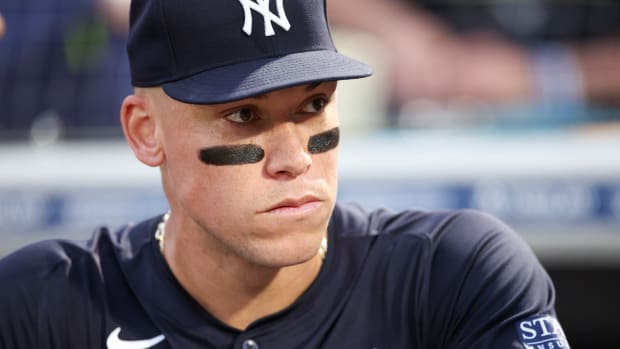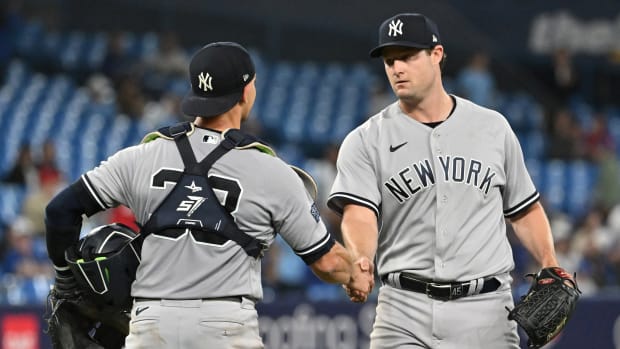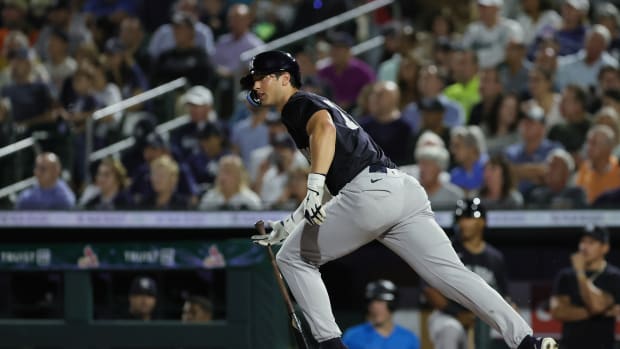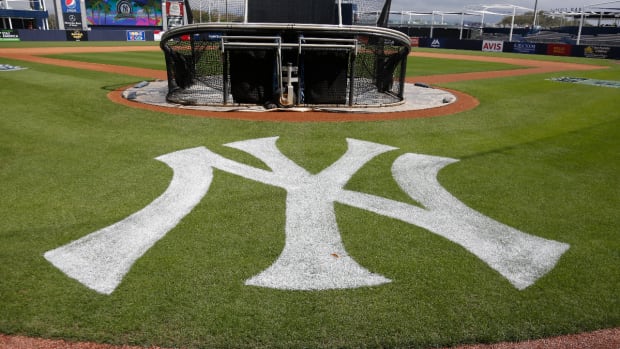Somerset’s Submerged Ballpark Won’t Be The Last
Unprecedented Northeast flooding left Bridgewater’s TD Bank Ballpark, the home of the Somerset Patriots, and the surrounding area underwater on Thursday morning.
The surge was caused by heavy rain from the remnants of Hurricane Ida, which ravaged parts of New York and New Jersey, among other areas, on Wednesday night. The destruction left at least 42 dead as of Friday morning.
The Patriots, the Yankees’ Double-A affiliate, are fortunately on the road for a series against the Bowie Baysox. The team was supposed to return to TD Bank Ballpark on Tuesday for its final homestand of the season. It’s currently unclear whether that series against the Hartford Yard Goats will be played as scheduled.
TD Bank Ballpark sits just north of the Raritan River, where water levels were still rising as of Thursday afternoon.
“The ballpark flooded like much of the surrounding area. We are in the process of evaluating to what extent and the damage caused,” Patriots president and general manager Patrick McVerry said in a statement. “In the meantime, we are thinking about all our neighbors dealing with flooding of their homes and businesses and hope everybody is safe.”
While the team was out of harm’s way on the road, many Patriots players realized that their property was caught in the inundation.
Pitcher Nick Ernst shared a photo of his swamped truck, while fellow right-hander Addison Russ acknowledged that his vehicle met the same fate. While some players tried to keep things light on social media, OF Isiah Gilliam offered a blunter assessment: “We lost everything.”
“For the ones trolling, talking about ‘what is everything? Some bats and gloves’, allow me to reiterate,” the 25-year-old tweeted. “EVERY PLAYER AND COACH lost their vehicles and clothes (we are on a road trip, so we pack light) from the storm. This isn’t a cry for help. Just to clarify our situation…”
Adopt A Minor Leaguer, an organization that provides assistance to minor leaguers, is raising money to help Somerset’s players.
Somerset was not the only Yankees-centric ballpark to take on water. Farther north, Yankee Stadium’s outfield was also submerged Wednesday as New York City endured the storm. Yankees radio announcer John Sterling had to be rescued as his own car was surrounded by water. The official account for National Weather Service New York NY issued its first ever flash flood warning for the city as infrastructure across the area drowned.
TD Bank Ballpark—which also flooded in 1999 during Hurricane Floyd—and Yankee Stadium were not the first sports facilities to take on a wetlands-like aesthetic. They certainly won’t be the last as climate change continues to negatively impact the world we live in.
It’s not just deluges of water and devastating storms hurting the sports and communities we love, either. It’s a planet that is getting hotter. It’s wildfires that ravage the land they burn and send smoke drifting even further. The list goes on.
It was over 14 years ago that Sports Illustrated published a cover story that featured former Marlins pitcher Dontrelle Willis standing in knee-deep water at Dolphin Stadium. The visual imagined rising sea levels overtaking the stadium and South Florida. The cover stated, “Time to Pay Attention.”
All these years later, the graphic hardly takes an active imagination to conceive, and it is clear that not enough people paid proper attention. Many, it appears, never will.
Just through a sports-centric lens, this means a future where temperatures are increasingly too hot to safely play or even watch a game. This means more and more games being rescheduled and relocated due to catastrophic events. This means damage to stadiums—and the people and communities that frequent and depend on them. This means places that teams and people currently call home will one day become uninhabitable.
Everyone—even those who ignore it or pretend it doesn’t exist—is facing this crisis. But it stands to reason that baseball will be one of the sports most impacted by climate change.
It is a nearly year-round game that is played mostly outdoors, and it has the most professional teams spread across the most locations when factoring in a number of minor league affiliates that is unparalleled in other sports.
With that in mind, Major League Baseball should be leading the athletic world in the fight against climate change.
In fairness, there is MLB Green, a commitment to environmental sustainability by the league and its teams. The initiative “practices environmental stewardship” in several ways, and MLB became the first pro sports league to have all its teams enrolled in the Green Sports Alliance.
But even the most knowledgeable baseball fans probably didn’t know such a thing exists. MLB and its owners should be, at the very least, promoting such efforts in full force. They should also be expanding on them and investing more resources into them.
That statement applies to the world at large—it is incomprehensible that anyone could look at recent events and think “we’re doing too much”—but MLB and its owners should also have selfish motivations here, if not civically responsible ones. They, along with other leagues, have products and revenues they should want to protect long-term, as well as the capital and the political influence to at least add momentum to the fight against climate change.
Admittedly, that is likely wishful thinking. Sadly, the image that graced that 2007 Sports Illustrated cover feels more probable.
Maybe, just maybe, though, more people will start to pay attention as more ballparks and communities flood.
MORE:
- Andrew Velazquez, Luis Gil Expected To Impact Yankees In September
- Gerrit Cole Strikes Out 15, Halting Yankees' Losing Streak in Dominant Fashion
- Gio Urshela Needs MRI on New Injury Just Days After Returning From IL
Follow Gary Phillips on Twitter (@GaryHPhillips). Be sure to bookmark Inside The Pinstripes and check back daily for news, analysis and more.





